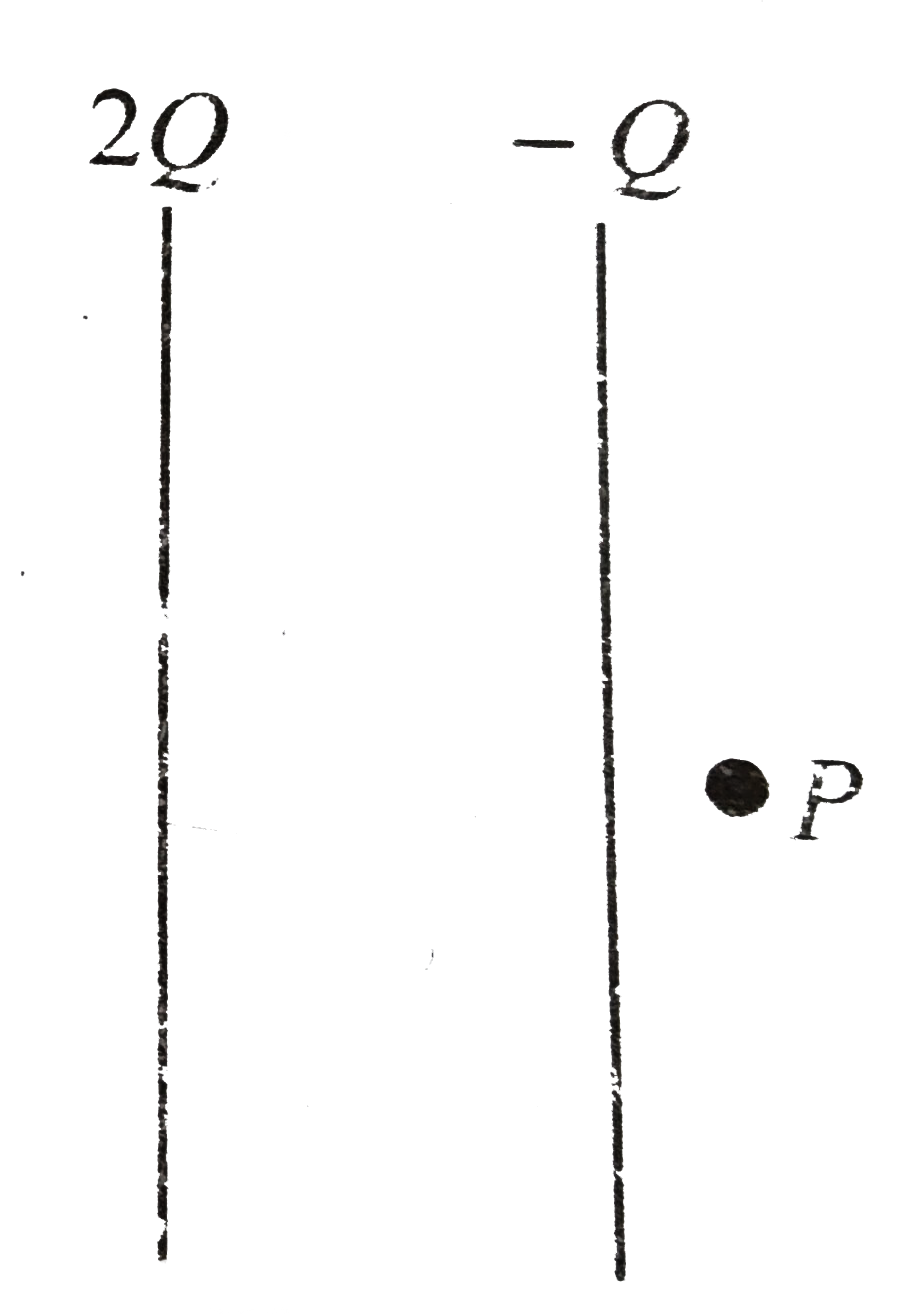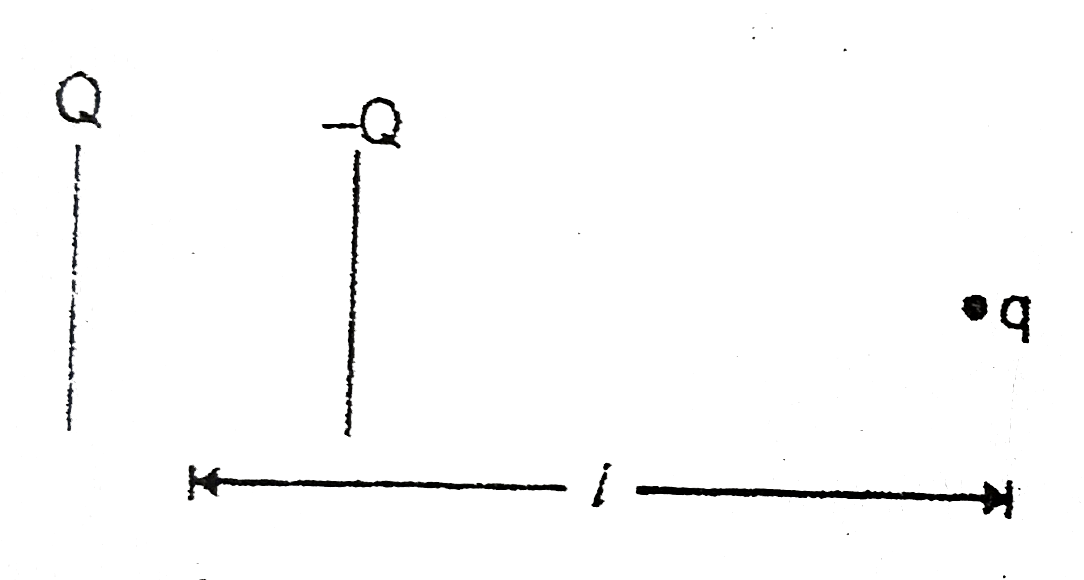In figure , the plates of a parallel plate capacitors have unequal charges. Its capacitance is C. P is a point outside the capacitor and close to the plate of charge -Q. The distance between the plates is d. Then

a point charge at point P will experience electric force due to the capacitors
the potential difference between the plates will be 3Q/2C.
the energy stored in the electric field in the region between the plates is 9Q2/8C.
the force on one plate due to the other plate is Q2/2πε0d2.
The correct Answer is:A, B, C
a.,b.,c.
i. E=2Q2Aε0+Q2Aε0=3Q2Aε0
or E=32Qcd or Ed=3Q2C=V
ii. F=E(−Q)=(2Q2Aε0)×(−Q)1=Q2Aε0
=Q2Aε0 ltbgt iii. Energy =12ε0E2Ad=12ε0(3Q2Cd)2Ad=98Q2C
Topper's Solved these Questions
- MISCELLANEOUS VOLUME 3BOOK - CENGAGE PHYSICSCHAPTER - MISCELLANEOUS VOLUME 3EXERCISE - Assertion and Reason Type
8 Videos
- MISCELLANEOUS VOLUME 3BOOK - CENGAGE PHYSICSCHAPTER - MISCELLANEOUS VOLUME 3EXERCISE - Comprehension Type
94 Videos
- MISCELLANEOUS VOLUME 3BOOK - CENGAGE PHYSICSCHAPTER - MISCELLANEOUS VOLUME 3EXERCISE - True and False
3 Videos
- MECHANICAL PROPERTIES OF SOLIDSBOOK - CENGAGE PHYSICSCHAPTER - MECHANICAL PROPERTIES OF SOLIDSEXERCISE - Question Bank
4 Videos
- MISCELLANEOUS VOLUME 5BOOK - CENGAGE PHYSICSCHAPTER - MISCELLANEOUS VOLUME 5EXERCISE - Integer
12 Videos
Similar Questions
Knowledge Check
In the figure shown the plates of a parallel plate capacitor have unequal charges. Its capacitance is 'C' P is a point outside the capacitor and close to the plate of charge −Q. The distance between the plates is 'd'
 AA point charge at point 'P' will experience electric force due to capacitorBThe potential difference between the plates will be 3Q2CCThe energy stored in the electric field in the region between the plates is 9Q28CDThe force on one plate due to the other plate is Q22π∈0d2
AA point charge at point 'P' will experience electric force due to capacitorBThe potential difference between the plates will be 3Q2CCThe energy stored in the electric field in the region between the plates is 9Q28CDThe force on one plate due to the other plate is Q22π∈0d2A dielectric slab is placed between the plates of a parallel plate capacitor. Its capacitance
Abecomes zeroBremains the sameCdecreasesDincreasesA parallel plate capacitor C has a charge Q. The actual charges on its plates are
AQ,QBQ/2, Q/2CQ,-QDQ/2. - Q/2
The plates of small size of a parallel plate capacitor are charged as shown. The force on the charged particle of 'q' at a distance 'l' from the capacitor is : (Assume that the distance between the plates is d<<l)

View SolutionThe plates of small size of a parallel plate capacitor are charged as shown. The force on the charged particle of 'q' at a distance 'l' from the capacitor is : (Assume that the distance between the plates is d<<l)

View SolutionThe capacitance of a parallel plate capacitor is 2μF and the charge on its positive plate is 2μC. If the charge on its plates is doubled, the capacitance of the capacitor
View SolutionA parallel plate capacitor is charged. If the plates are pulled apart
View SolutionThe plates of small size of a parallel plate capacitor are charged as shown. The force on the charged particle of 'q' at a distance 'l' from the capacitor is : (Assume that the distance between the plates is d<<l)

View Solution

